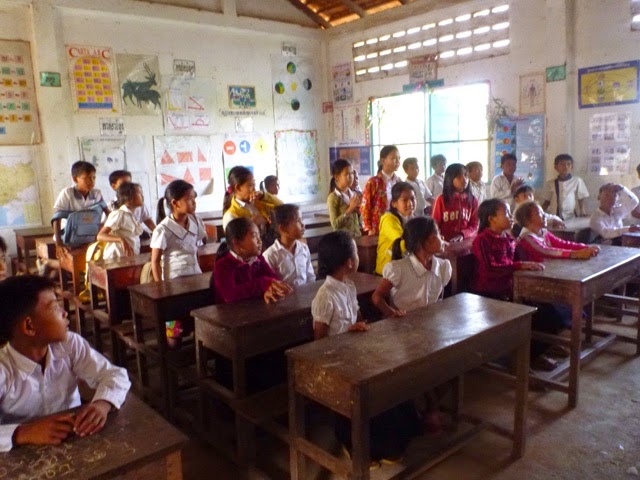Today we had the most touching experience of our trip. A group of us went for a visit to Evergreen Island which is a farming village virtually removed from tourism. Our guide knew one of the residents and we were invited into the home of Mr Lok. He is a 67 year old farmer who at the age of 15 went to fight with the Viet Cong to avenge he deathes of his two brothers. Our guide asked if there were any Vietnam vets in our group of which there was one. He stood and Mr Lok went forward and addressed him in Vietnamese which our guide interpreted. He said that war is a book that is now closed and enemies are now friends. They then shook hands and then embraced warmly. There was not a dry eye in he room. What a special moment to witness. When those in our group enquired whether we could leave a token of our appreciation to Mr Hok we were told he would be insulted as he opened his home from his heart. As we toured he village the local children followed along always trilled to have their picture taken. With laundry hanging outside and chickens running around with their young it is a whole different world but the people are happy and well fed so who are we to judge.
Lining the river are very old boats which on closer inspection are homes to the fishermen and their families. It is a common sight to see groups of people sitting together sharing a meal or socializing. I must admit that seeing the water in which tilapia is raised will prevent me from making that purchase.
Told that we were to visit a rattan factory conjured pictures in our minds that were far from reality. The building was a rickety old structure with a couple of rows of very basic looms. Unfortunately power had been cut off so the looms were not working but we did watch a local hand dying the rattan that is used in the weaving and another cutting woven pieces into the appropriate sizes with a old cutter. The average worker In the factory makes 6-7 dollars a day.
The activity on the river continues with every type of old local boat out fishing to make a living. Fascinating.
Mr Hok and family. A truly memorable visit.
The old and the new
Inside the living area
Local homes on Evergreen IslandDelightful children greeted us every where
Home along the bank with the boat ready to go to work
River home
Close neighbors
A smile from is lady out for a stroll
Inside the rattan factory
Hand dying the reeds
Vibrant colours




















































